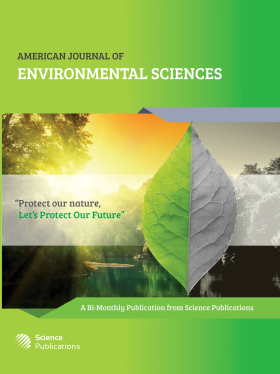Effect of Converting Secondary Tropical Peat Swamp Forest into Oil Palm Plantation on Selected Peat Soil Physical Properties
Abstract
Problem statement: The conversion of forest land into oil palm plantation is considered to be one of the causes of soil degradation and loss of tropical land forest in Southeast Asia. The objective of this study was to compare selected peat soil physical properties of secondary tropical peat swamp forest and oil palm plantation to determine the effect of forest conversion. Approach: Peat soil samples were collected from secondary tropical peat swamp forest and oil palm plantation at Batang Igan, Sibu, Sarawak, Malaysia. Experimental plots of 300 m3 were set up in both sites and thirty peat soil samples were collected randomly in both sites at 0-15 cm depth using a peat auger. Undisturbed cores and bulk samples were collected for analysis of bulk density and moisture content. Fiber content of the total mass of organic materials was determined by wet sieving method. Soil bulk density, moisture content, organic matter, mineral content, soil porosity and particle density were determined by standard procedures. Hydraulic conductivity was measured in the field using Model 2800K1 Guelph Permeameter and soil strength was determined using Hand Operated Cone Penetrometer Eijkelkemp. Unpaired T-test was used to compare the variables of the two sites. Results: Both sites had similar degree of decomposition classified as hemic peat. No significant differences in fiber content, moisture content and particle density. Bulk density, mineral content and soil strength were significantly higher in the oil palm plantation while organic matter content, porosity and saturated hydraulic conductivity were significantly higher in the secondary tropical peat swamp forest. Conclusion: Conversion of secondary tropical peat swamp forest to oil palm plantation has significantly increased soil bulk density, mineral content and soil strength but significantly decreased organic matter content, porosity and saturated hydraulic conductivity. However, degree of decomposition, fiber content, moisture content and particle density were not affected by the conversion.
DOI: https://doi.org/10.3844/ajessp.2010.402.405

- 4,106 Views
- 4,913 Downloads
- 40 Citations
Download
Keywords
- Secondary tropical peat swamp forest
- oil palm plantation
- soil physical properties
